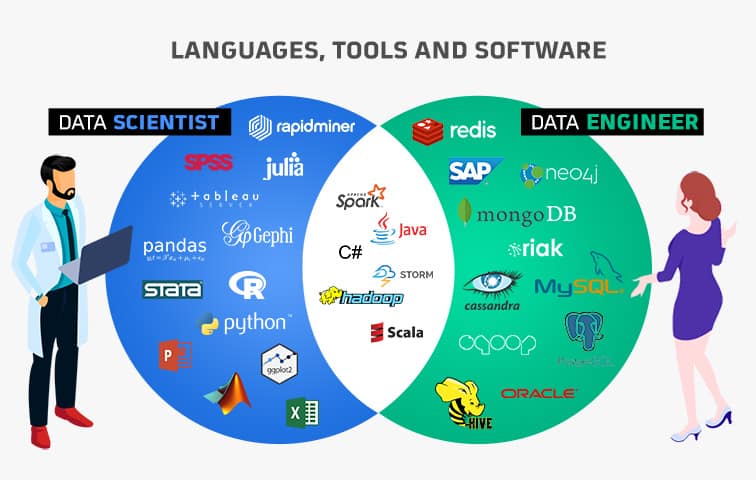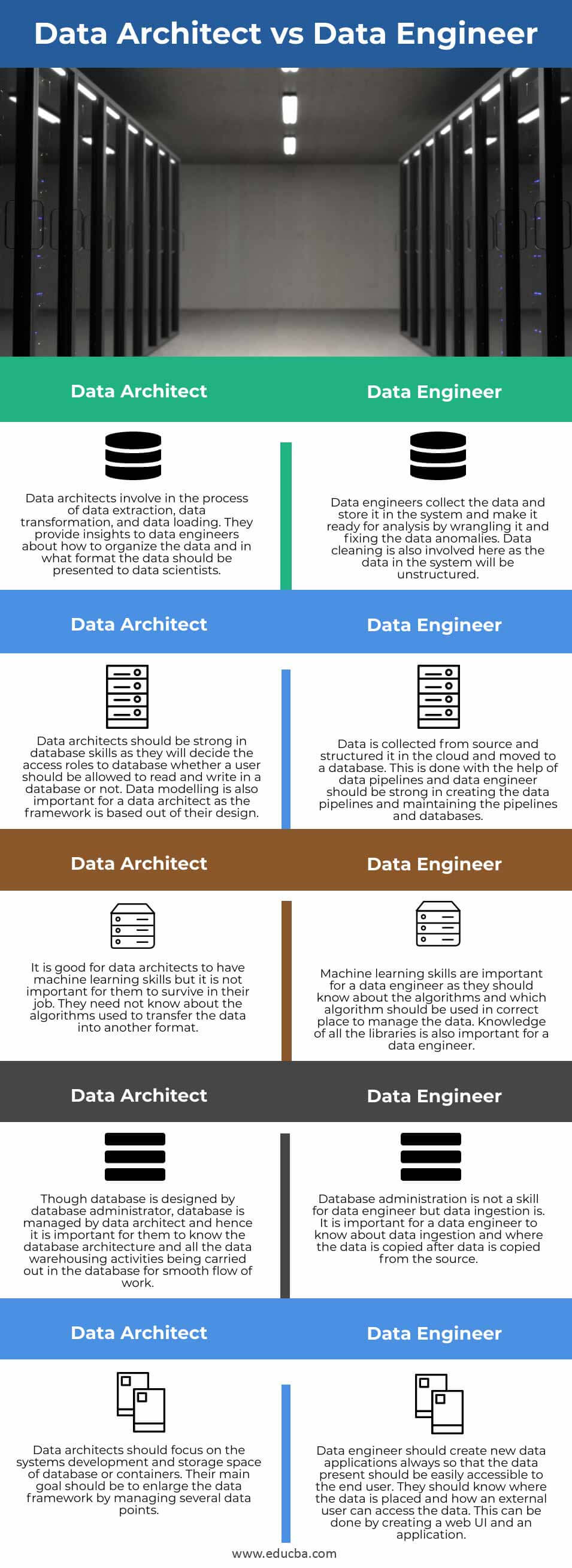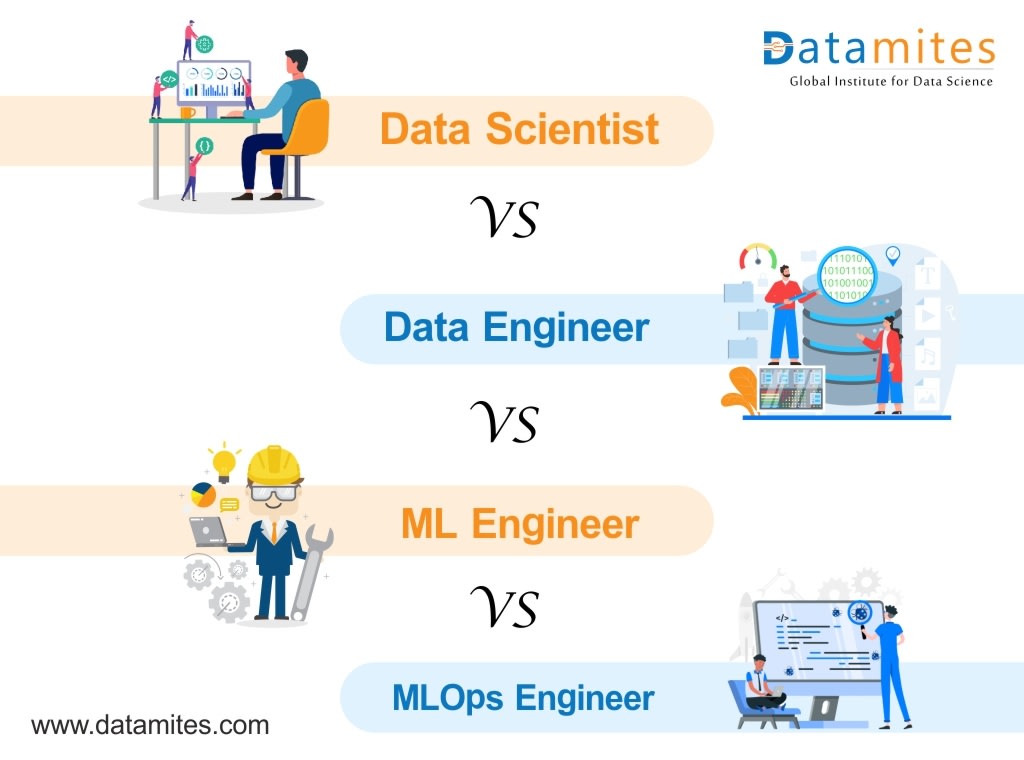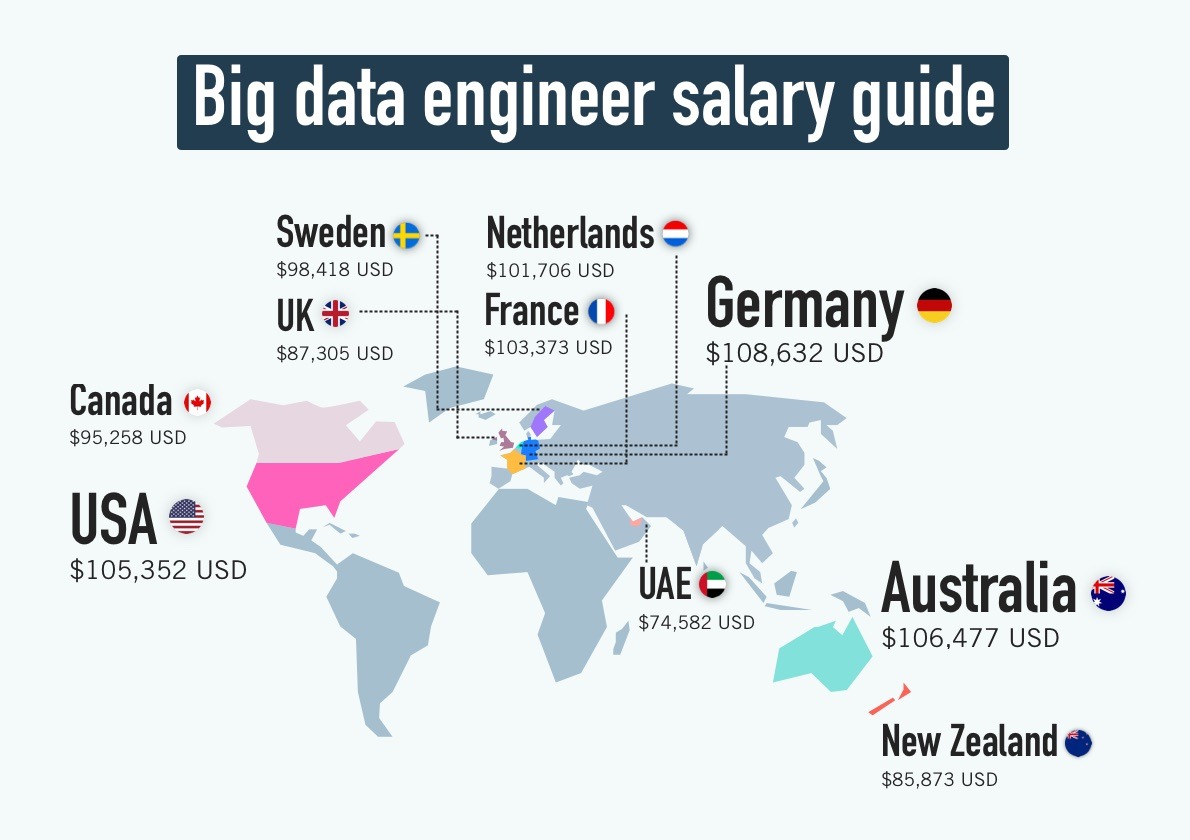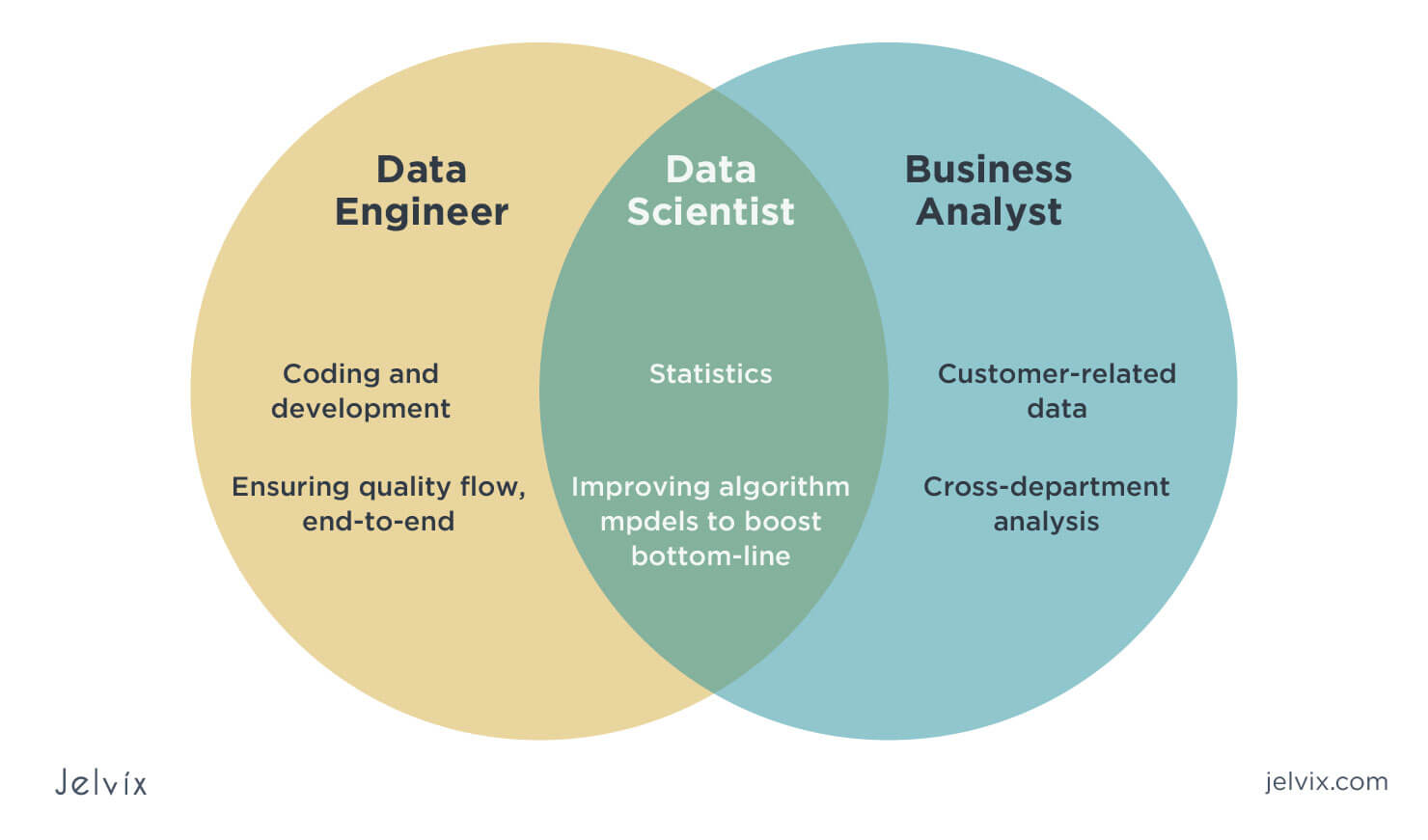Data Engineer vs Data Architect: An Overview
In the realm of data-driven organizations, two critical roles often come to the forefront: data engineering and data architecture. These roles, while interconnected, have distinct responsibilities and objectives. This article aims to compare and contrast data engineer vs data architect roles, helping you understand their differences and similarities. By the end, you will have a clearer picture of which career path aligns better with your interests and skills.
The Role of a Data Engineer
A data engineer plays a pivotal role in data-driven organizations, responsible for building, maintaining, and improving the infrastructure that stores, processes, and transforms raw data into a usable format. This role requires a blend of programming, data management, and analytical skills, ensuring that data is accessible, accurate, and secure for various stakeholders.
Data engineers’ primary responsibilities include designing, constructing, and testing data pipelines, warehouses, and data lakes. They also work on optimizing data flow, ensuring data quality, and integrating new data sources. Furthermore, data engineers collaborate with data scientists, data analysts, and other team members to create a robust data infrastructure that supports data-driven decision-making.
Required skills for data engineers typically include proficiency in programming languages such as Python, Java, or Scala, and big data processing frameworks like Apache Hadoop, Apache Spark, or Flink. Familiarity with cloud platforms like AWS, Azure, or Google Cloud, and databases like SQL, NoSQL, or time-series databases is also essential. Strong problem-solving abilities, attention to detail, and the capacity to work in a fast-paced, collaborative environment are vital for success in this role.
The Role of a Data Architect
A data architect plays a critical role in data-driven organizations, responsible for designing, creating, and implementing efficient data systems that meet business needs. They serve as the bridge between IT and business teams, ensuring seamless communication and collaboration. The data architect’s role is characterized by a strong focus on data strategy, design, and governance.
The primary responsibilities of a data architect include:
- Developing and maintaining the organization’s data architecture strategy, aligning it with business goals and objectives.
- Collaborating with stakeholders to identify data requirements and designing data systems that cater to these needs.
- Defining data governance policies, ensuring data quality, security, and compliance with industry regulations.
- Selecting appropriate data storage solutions, such as data warehouses, data lakes, and data fabrics, to support various business functions.
- Designing and implementing data integration strategies, enabling seamless data flow between systems and applications.
- Providing guidance and mentorship to data engineers, data analysts, and other data professionals within the organization.
To excel in this role, a data architect must possess a unique blend of technical and soft skills, including:
- Strong understanding of data management principles, databases, and data storage technologies.
- Excellent communication and collaboration skills to work effectively with both technical and non-technical stakeholders.
- Ability to think strategically and translate business needs into data system requirements.
- Experience with data modeling, data warehousing, and data integration techniques.
- Familiarity with data governance frameworks, data security, and privacy regulations.
A typical day in the life of a data architect may involve meetings with business stakeholders to understand their data needs, designing data models and architecture blueprints, reviewing data engineering work, and staying updated on the latest industry trends and technologies.
Data architects are essential to the success of data-driven organizations, as they ensure that data systems are well-designed, scalable, and aligned with business objectives. By understanding the role of a data architect, professionals can make informed decisions about whether this career path aligns with their interests, skills, and long-term goals.
Key Differences Between Data Engineers and Data Architects
While data engineers and data architects collaborate closely in data-driven organizations, their roles and responsibilities differ significantly. Understanding these differences can help professionals decide which career path aligns best with their interests, skills, and long-term goals.
Infrastructure vs. Design
Data engineers focus on building and maintaining the infrastructure required to collect, store, process, and analyze data. They work with various tools, technologies, and programming languages to create scalable, efficient, and reliable data systems. In contrast, data architects concentrate on designing the overall architecture of data systems, ensuring that data flows seamlessly between different components and applications. They create blueprints for data systems, outlining how data is collected, stored, and accessed, and define data governance policies.
Short-term vs. Long-term Planning
Data engineers typically work on short-term projects, addressing immediate data infrastructure needs. They may be involved in building new data pipelines, optimizing existing data systems, or troubleshooting data-related issues. Data architects, on the other hand, focus on long-term planning, developing strategies for data management, and ensuring that data systems can scale and adapt to changing business needs.
Hands-on vs. Strategic Work
Data engineers have more hands-on roles, working directly with data infrastructure and tools. They write code, build data pipelines, and test data systems to ensure they function correctly. Data architects, however, have a more strategic role, focusing on high-level design, data governance, and collaboration with stakeholders to align data systems with business objectives.
By understanding the key differences between data engineers and data architects, professionals can make informed decisions about which career path best suits their skills, interests, and long-term goals. Both roles are essential in data-driven organizations, and each offers unique opportunities for growth, learning, and impact.
How to Choose Between Data Engineering and Data Architecture
Deciding between a career in data engineering and data architecture can be challenging, as both roles are essential in data-driven organizations and share some similarities. However, understanding the key differences, required skills, and primary responsibilities can help professionals make informed decisions based on their personal interests, skill sets, and long-term career goals.
Personal Interests
Professionals should consider their personal interests when choosing between data engineering and data architecture. Data engineers often enjoy working with various tools, technologies, and programming languages, building and optimizing data systems. They may also prefer hands-on work, troubleshooting issues, and collaborating with data scientists and analysts. Data architects, on the other hand, might be more interested in high-level design, data governance, and strategic planning, working closely with business stakeholders to align data systems with organizational objectives.
Skill Sets
Assessing one’s skill set is also crucial when deciding between data engineering and data architecture. Data engineers typically need strong programming skills, experience with data infrastructure tools, and the ability to work with large datasets. Data architects should have excellent communication and collaboration skills, a deep understanding of data management principles, and experience with data modeling, data warehousing, and data governance frameworks.
Long-term Career Goals
Considering long-term career goals can help professionals choose between data engineering and data architecture. Data engineering might be a better fit for those interested in continually learning new tools and technologies, working on various projects, and progressing towards leadership roles in data infrastructure or data science teams. Data architecture, however, might be more suitable for those interested in strategy, data governance, and working closely with business stakeholders to drive data-driven decision-making.
Ultimately, the choice between data engineering and data architecture depends on an individual’s personal interests, skill sets, and long-term career goals. Both roles offer unique opportunities for growth, learning, and impact in data-driven organizations. Professionals should consider exploring both fields, attending workshops, networking events, and completing relevant courses to gain a better understanding of each role before making a decision.
Real-World Examples: Data Engineer vs Data Architect
Data engineers and data architects play crucial roles in various industries, contributing to their organizations’ data-driven decision-making and operational efficiency. Here are some real-world examples of data engineer and data architect roles:
Data Engineer in Healthcare
A data engineer working in a healthcare organization might be responsible for building and maintaining data pipelines that integrate patient data from various sources, such as electronic health records, clinical trials, and wearable devices. They may also work on optimizing data systems for real-time data processing, enabling healthcare providers to make timely and informed decisions about patient care.
Data Architect in Finance
A data architect in the finance industry could be tasked with designing and implementing a data architecture that supports various business functions, such as risk management, compliance, and customer analytics. They might work on defining data governance policies, ensuring data quality, and implementing data security measures to protect sensitive financial information.
Data Engineer in Retail
A data engineer in retail might focus on building data infrastructure that supports inventory management, supply chain optimization, and customer analytics. They could be responsible for creating data pipelines that integrate data from various sources, such as point-of-sale systems, online sales platforms, and customer relationship management tools.
Data Architect in Manufacturing
A data architect in manufacturing might work on designing a data architecture that supports product lifecycle management, quality control, and predictive maintenance. They could collaborate with business stakeholders to define data requirements, create data models, and implement data governance policies that ensure data accuracy, completeness, and security.
These real-world examples demonstrate the unique contributions of data engineers and data architects in various industries. By understanding the specific challenges and opportunities in their respective fields, professionals can make informed decisions about pursuing a career in data engineering or data architecture.
Salary and Job Outlook for Data Engineers and Data Architects
The salary and job outlook for data engineers and data architects can vary based on factors such as location, industry, and experience level. Here’s a comparison of the salary and job outlook for these two roles using up-to-date data and statistics:
Salary
According to the Payscale salary data for 2023, the median salary for data engineers in the United States is approximately $98,000 per year, while data architects earn a median salary of around $125,000 per year. However, these numbers can vary significantly based on factors such as location, industry, and experience level.
Job Outlook
The demand for data engineers and data architects is expected to grow in the coming years, driven by the increasing adoption of data-driven decision-making and digital transformation across various industries. According to the Burning Glass Technologies report, the demand for data engineers and data architects has grown by over 50% in the last five years.
Factors Influencing Salary and Job Outlook
Several factors can influence the salary and job outlook for data engineers and data architects, including:
- Location: Data engineers and data architects in major tech hubs, such as San Francisco, New York, and Seattle, tend to earn higher salaries than those in other regions.
- Industry: Data engineers and data architects working in industries with high data volumes, such as finance, healthcare, and retail, tend to have better job prospects and higher salaries.
- Experience level: Senior-level data engineers and data architects with extensive experience and a proven track record of successful projects tend to earn higher salaries and have better job prospects.
By understanding the salary and job outlook for data engineers and data architects, professionals can make informed decisions about their career paths and negotiate better compensation packages.
Continuing Education and Professional Development
Continuing education and professional development are crucial for data engineers and data architects to stay up-to-date with the latest trends and technologies in their fields. Here are some relevant certifications, courses, and conferences that can help professionals in these roles enhance their skills and knowledge:
Certifications
- Cloudera Data Engineer Certification: This certification demonstrates a data engineer’s proficiency in building and managing big data solutions using Cloudera’s platform. It covers topics such as data ingestion, processing, and analysis using tools like Apache Hadoop, Apache Spark, and Apache Kafka.
- Microsoft Certified: Azure Data Engineer Associate: This certification validates a data engineer’s skills in designing and implementing data solutions using Microsoft Azure. It covers topics such as data storage, processing, and security, as well as data integration, processing, and workload optimization.
- Data Architect Certification: This certification demonstrates a data architect’s proficiency in designing and implementing data architecture solutions using various tools and technologies. It covers topics such as data modeling, data warehousing, big data, and cloud computing.
Courses
- Coursera’s Data Engineering, Big Data, and Machine Learning on GCP: This course covers the fundamentals of data engineering, big data, and machine learning on Google Cloud Platform. It covers topics such as data processing, data warehousing, data analytics, and machine learning.
- edX’s Professional Certificate in Data Science: This program covers the fundamentals of data science, including data visualization, machine learning, and data management. It covers topics such as data wrangling, data visualization, and machine learning algorithms.
- Udemy’s The Ultimate Hands-On Hadoop – Tame your Big Data!: This course covers the fundamentals of Hadoop and big data, including data processing, data storage, and data analysis. It covers topics such as Hadoop architecture, MapReduce, HDFS, and Pig.
Conferences
- Strata Data & AI: Strata Data & AI is a conference that covers the latest trends and technologies in data engineering, data science, and artificial intelligence. It features talks, workshops, and training sessions on topics such as big data, machine learning, and data architecture.
- Data Engineering Conference (DEC): DEC is a conference that focuses on data engineering, covering topics such as data processing, data storage, and data management. It features talks, workshops, and training sessions on topics such as Hadoop, Spark, Kafka, and data warehousing.
- Data Architecture Summit: Data Architecture Summit is a conference that focuses on data architecture, covering topics such as data modeling, data governance, and data integration. It features talks, workshops, and training sessions on topics such as data warehousing, big data, and cloud computing.
By investing in continuing education and professional development, data engineers and data architects can enhance their skills, knowledge, and career prospects. Staying up-to-date with the latest trends and technologies can help professionals in these roles stay competitive and deliver value to their organizations.

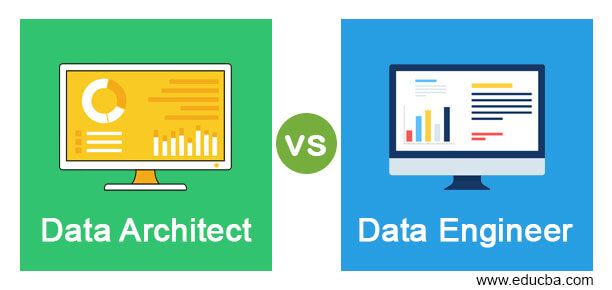
-1200x630.jpg)

